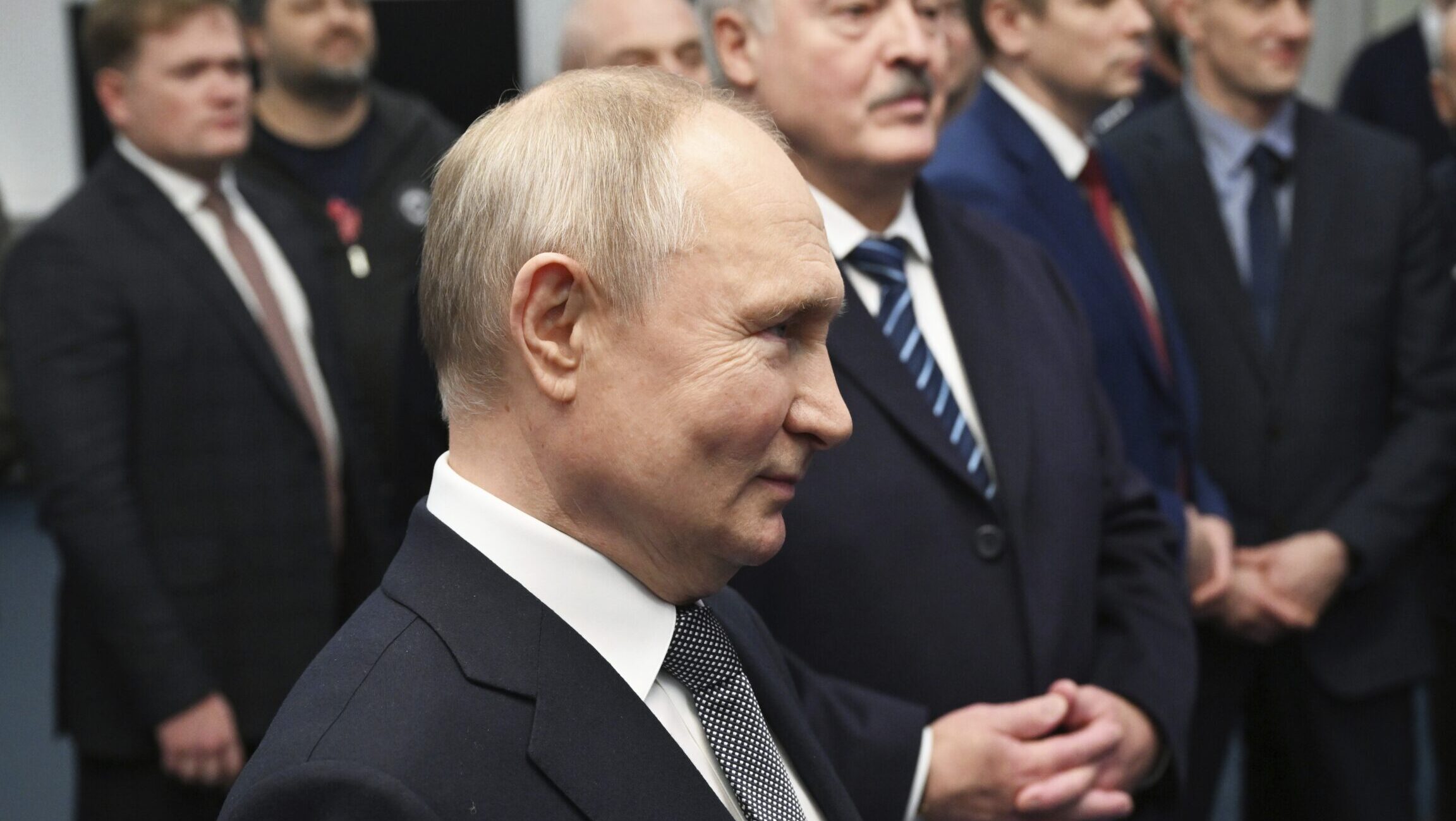How long can Spain take the financial heat?
Aug 10, 2012, 6:00 PM
Associated Press
(AP) – Imagine struggling to keep a control of your debts, with the costs and interest rates going up and up until you can barely meet the monthly installments. How long do you hold on, scrimping and saving, before you throw in the towel?
That is the problem facing Spain, whose Prime Minister Mariano Rajoy is fighting to prevent his country becoming the latest _ and biggest _ victim of the economic crisis crippling the 17 countries that use the euro and ask for a full-blown government bailout.
The clock is ticking for the country, which is finding fewer and fewer buyers for its debt, sold on the market as bonds. Investors are charging the country increasingly higher rates so that it can borrow the money it needs to keep the economy and public services working.
Investors have taken flight as the uncertainty over the whether the country can afford to contain the problems in its banking sector and indebted regional governments continues unabated.
As demand falls for a country’s bond, its price falls and the interest rate the country would have to pay to sell it rises.
On the secondary market, where bonds are traded, the interest rate Spain would have to pay on 10-year debt has hovered around 7 percent for weeks. Most market-watchers think borrowing at an interest rate of 7 percent is unaffordable for a country in the long-term. And it’s also the pain threshold that eventually compelled Greece, Ireland, and Portugal to request billion-euro bailouts.
The 7 percent interest rate is “a totem, because it shows a total lack of confidence in the country,” says Matteo Cominetta, a European economist at UBS.
“The problem is that rates at that level kill the economy and basically make any growth impossible,” he said. “The road is getting narrower and narrower and in the end (Spain) will have to ask for an intervention.”
Investors are fretting over whether Spain will be able to repay its loans, and the country could end up being shut out of vital international debt markets. High borrowing costs mean fewer funds for investment, and government austerity policies meant to save money to pay the increased interest rates could choke off growth.
In a bond auction last week, Spain sold (EURO)1.04 billion in 10-year bonds at an average interest rate of 6.65 percent and (EURO)1.02 billion in four-year bonds at a rate of 5.97 percent, up from 5.54 percent.
Analysts reckon Spain has enough funds to manage its debts until next year. It has already managed to sell off 72 percent of its targeted (EURO)86 billion in medium- and long-term debt for this year.
The Spanish Treasury benefited from two events earlier this year and managed to build up a war chest that would save it from having to go to the bond markets too often and pay over the odds. The first was the ECB’s (EURO)1 trillion in low-rate loans offered to banks at the end of last year. Spanish banks used the funds from these loans to buy up debt in their country. At the same time, the Treasury front-loaded the start of the year with debt auctions, collecting more than Spain needs to cover its 2012 redemptions, notes Raj Badiani of IHS Global Insight.
“Spain, right now, has some leeway,” says Ishaq Siddiqi, an analyst at ETX Capital in London.
However, Spain’s future looks grim amid a catalogue of disheartening statistics:
_It is weathering an unprecedented double-dip recession, which is forecast to continue at least through next year. Almost a quarter of the working population is unemployed _ the eurozone’s highest.
_The International Monetary Fund says Spain’s public sector debt is climbing rapidly. The IMF sees it rising to almost 90 percent of its (EURO)1.07 trillion gross domestic product this year, from 68.5 percent last year. A country in recession would find this burden increasingly difficult to control.
_Spain’s budget deficit, which is supposed to stay within 3 percent of GDP like other eurozone members, came close to 9 percent in 2011. The government is trying to get it down to 6.3 percent this year. Other members of the eurozone are also struggling to comply with the 3 percent target.
_Spain’s Treasury puts the total outstanding central government debt at (EURO)611 billion at the end of June. The IMF estimates that this debt will mature in an average of six and a half years and has an average interest rate of 4.1 percent.
_Spanish banks are sitting on an estimated (EURO)176 billion in bad real estate loans and other investments and are now short of capital. Spain’s European partners have set already offered the country a (EURO)100 billion bailout loan to spare the banks from catastrophic collapse.
_Some of the country’s semiautonomous regions, which take up almost 40 percent of public money, have overspent and are broke. Some estimates put their combined debt at (EURO)140 billion.
_ Spain’s central bank released figures last month showing panicky investors are fleeing the country, pulling out a record (EURO)66.2 billion in March alone _ about double the figure for December.
_Spain’s ability to pay its debts is vital for other European banks. They were exposed to Spanish debt to the tune of (EURO)134 billion at the end of last year, with German banks holding (EURO)53.1 billion and French banks (EURO)23.4 billion, according to the Bank of International Settlements.
And time isn’t on Spain’s side as European leaders continue to quarrel over the best way out of an unrelenting crisis that is not only jeopardizing economic recovery in Europe but in the United States and China.
Spain’s reserves could easily be tested when it faces redemptions of almost (EURO)40 billion through the end of this year, including a key test in October when almost (EURO)30 billion matures, and has to tackle with rolling over these debts.
And, due to the high interest rates being demanded by investors, rolling over these bonds will be costly. This could lead to a liquidity crunch at some point next year.
Weakened Spain is also at the mercy of wider eurozone developments, especially in Greece which some investors fear could leave the euro next year and severely aggravate the bloc’s problems.
In order to bring its economy under control and restore the confidence of investors, Rajoy has come up with a package of tax hikes and spending cuts he says is worth (EURO)65 billion through the end of 2014. But he is reluctant to tighten the screw further amid fears of unrest in the streets. At the same time, he has not committed himself to asking for a full-blown sovereign bailout that would tarnish his political legacy.
The conservative government is squeamish about forfeiting a large degree of sovereignty over its national financial affairs, which earlier bailout recipients were forced to accept. And since Spain doesn’t need cash right now, it may be able to hold out for better terms on a rescue.
“We have time and we will act prudently,” Economy Minister Luis de Guindos said in an interview with ABC newspaper published last weekend.
Rajoy last week said he had sent a letter to senior European officials urging them to help push for the adoption in December of proposals for joint EU banking regulations and deposit protection. That would, in principle, help restore market faith in the eurozone’s banks and could help lower Spain’s bill for loan repayments.
Unless there is “a big, mighty push” from European policymakers to end the crisis, ETX Capital’s Siddiqi says, the eurozone’s woes will remain a drag on economic recovery around the world.
Though Spain faces no immediate emergency, the road ahead is daunting. The IMF calculates its gross financing needs through 2014 at (EURO)360 billion. Credit Suisse puts it at (EURO)385 billion.
Badiani, of IHS Global Insight, worries that Spain has run out of room for maneuver.
“What the markets are now saying … is that the Spanish government has exhausted its options and what we need now is a game-changing set of measures from the ECB or the European Union.”
(Copyright 2012 The Associated Press. All rights reserved. This material may not be published, broadcast, rewritten or redistributed.)









